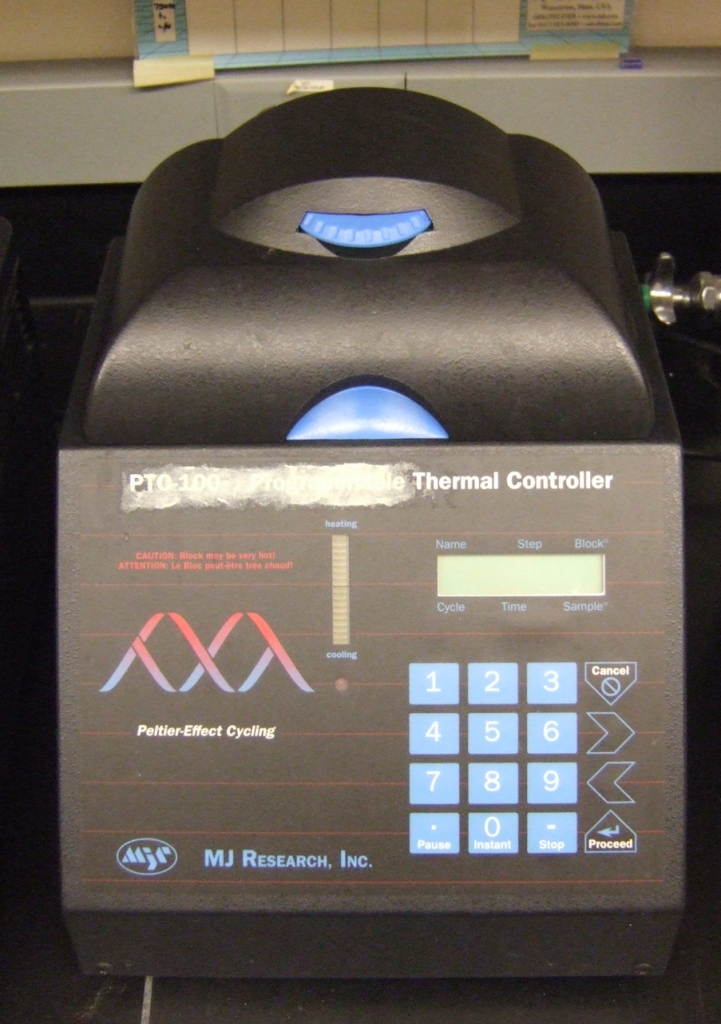Service contracts and extended warranties
When a lab purchases new equipment, the cost that needs to be considered is not just the price of the new machine, but also the service contract or extended warranty, and the price of any special consumables and spare parts for the equipment.
In this post, I’d like to look at a simple case, the thermocycler; a piece of equipment that’s crucial for every life science laboratory. The thermocycler uses generic consumables available from many different sources, so this latter consideration is not in play. The decision here is whether the lab should spring for equipment insurance offered in the extended warranty.
To some extent, this decision puts us in the same situation as any appliance consumer, see this article from the New York Times. There’s a big difference though, which is that the money we spend is not our money. The resources we have available come to us courtesy of the taxpayer, or from charities and foundations. They are given to scientists on trust, to enable us to perform research that moves knowledge forward. Check out the Ithaca college PT striders as they gather to participate in the ‘Making Strides Against Breast Cancer’ walk here. If any funds raised in such fashion find their way to your lab, that’s a pretty sacred responsibility.
Here is our lab thermocycler; the PTC-100 with improved hot bonnet.
This piece of equipment is 10 years old. I don’t have a record of the exact purchase price but I have a 2002 quote on the same machine for $5700 (this is in the ballpark for what the machine cost in 1999).
When the machine arrived, it came with a 2 year warranty and the opportunity to purchase an extended warranty for up to 10 years (click on the picture below to enlarge).
If we would have taken the option of the extended warranty, we would have paid a minimum of $2680 to purchase 8 additional years of coverage. Most likely, we would have shelled out around $3800 because we would not have purchased the additional years of coverage within 30 days of receiving the machine. At the time, this model was recommended to us, but we had no way of knowing how reliable it was or how long it would last.
As it happened, the decision of whether or not to pay for the extended warranty was a mute point because when the lab was starting we did not have the resources to even consider this option. In this instance, it worked out well. The machine has been a continual workhorse, is still going strong and has NEVER broken down.
What have we learned?
- (1) MJ Research clearly manufacturers the most phenomenal thermocyclers!
- (2) If we could have reliable knowledge of the first point when purchasing new equipment, it would be more straightforward to assess the extra costs and our research dollars can go further.
But how can we know this kind of information? Word-of-mouth is one mechanism, but it hardly seems very scientific, and a “consumer reports” for lab equipment doesn’t exist (that I’m currently aware of).
One option is for more experienced lab hands to document and share their knowledge. These issues are not glamorous but are important considerations for the practicalities of the scientific process. Additional information when purchasing equipment could be very helpful, for example in planning new lab start-ups, and is particularly crucial in this period of financial belt-tightening.
What about you? Do you have any observations on the reliability of lab equipment? Please share your experience and leave a comment.
In the next post of this series, we’ll look at what it would cost to purchase a new thermocycler in 2010. I also hope to cover issues like how long should equipment should last, or be expected to last.
Comments
Leave a Reply
You must be logged in to post a comment.



